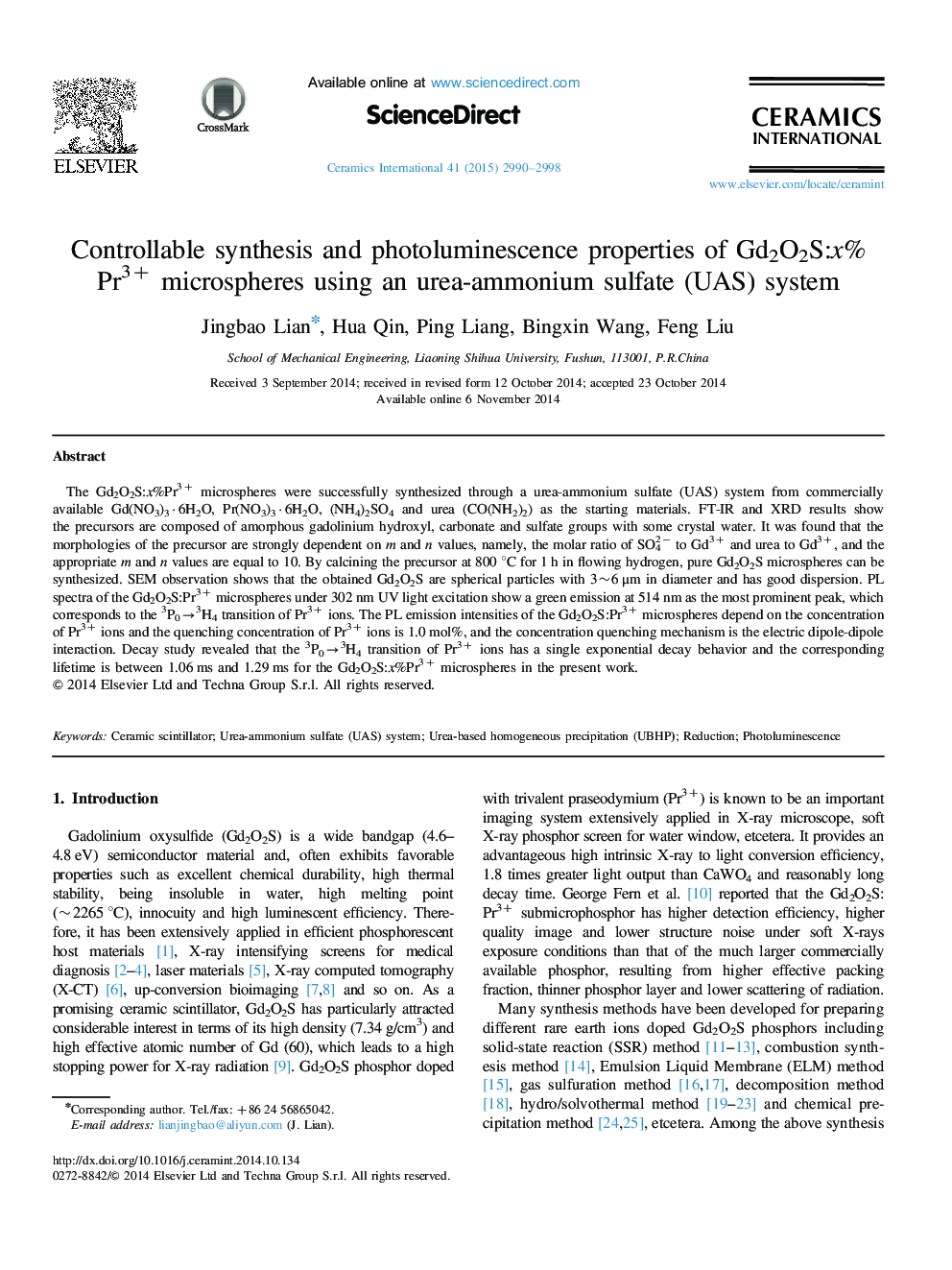| Article ID | Journal | Published Year | Pages | File Type |
|---|---|---|---|---|
| 1460620 | Ceramics International | 2015 | 9 Pages |
The Gd2O2S:x%Pr3+ microspheres were successfully synthesized through a urea-ammonium sulfate (UAS) system from commercially available Gd(NO3)3·6H2O, Pr(NO3)3·6H2O, (NH4)2SO4 and urea (CO(NH2)2) as the starting materials. FT-IR and XRD results show the precursors are composed of amorphous gadolinium hydroxyl, carbonate and sulfate groups with some crystal water. It was found that the morphologies of the precursor are strongly dependent on m and n values, namely, the molar ratio of SO42− to Gd3+ and urea to Gd3+, and the appropriate m and n values are equal to 10. By calcining the precursor at 800 °C for 1 h in flowing hydrogen, pure Gd2O2S microspheres can be synthesized. SEM observation shows that the obtained Gd2O2S are spherical particles with 3~6 μm in diameter and has good dispersion. PL spectra of the Gd2O2S:Pr3+ microspheres under 302 nm UV light excitation show a green emission at 514 nm as the most prominent peak, which corresponds to the 3P0→3H4 transition of Pr3+ ions. The PL emission intensities of the Gd2O2S:Pr3+ microspheres depend on the concentration of Pr3+ ions and the quenching concentration of Pr3+ ions is 1.0 mol%, and the concentration quenching mechanism is the electric dipole-dipole interaction. Decay study revealed that the 3P0→3H4 transition of Pr3+ ions has a single exponential decay behavior and the corresponding lifetime is between 1.06 ms and 1.29 ms for the Gd2O2S:x%Pr3+ microspheres in the present work.
